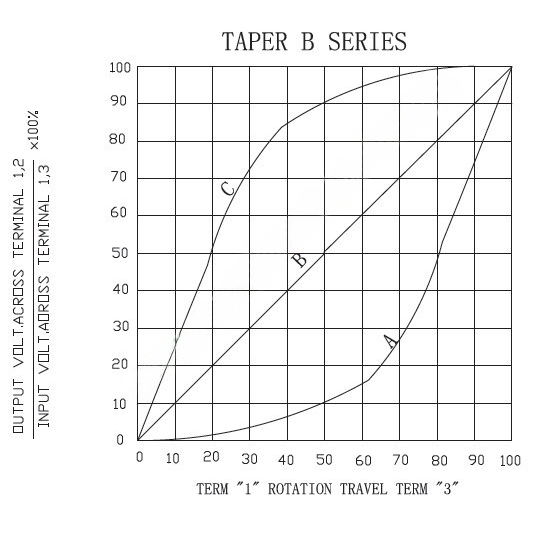The exponential, logarithmic and linear type of potentiometer refers to the relationship between the resistance value of the potentiometer and the rotation Angle of the contact point of the slide. In theory, this relationship can be in any functional form, but in practice, there are only three types mentioned above, as shown in figure A, B and C. When in use, linear potentiometer, the resistance change and the Angle of rotation into a linear relationship, suitable for voltage divider.
Exponential (reverse logarithmic) potentiometer. The resistance of the potentiometer varies greatly as it begins to rotate. The closer the corner is to the end of the maximum resistance, the smaller the change. This potentiometer applies to the tone control circuit of the sound circuit known as exponential (C).
When the logarithmic potentiometer starts to rotate, the resistance value changes less, while when the Angle of rotation is closer to the end of the maximum resistance value, the resistance value changes more.
The reason is that the human ear's perception of volume is roughly linear with the logarithm of sound power, that is, when the sound is increased from a small age, the human ear feels very sensitive, but when it reaches a certain value, even if the sound power has a large increase, the human ear feels little change. Therefore, logarithmic potentiometer (A) should be used in radio, TV and other volume control circuits.

A - logarithmic B - linear C - exponential
